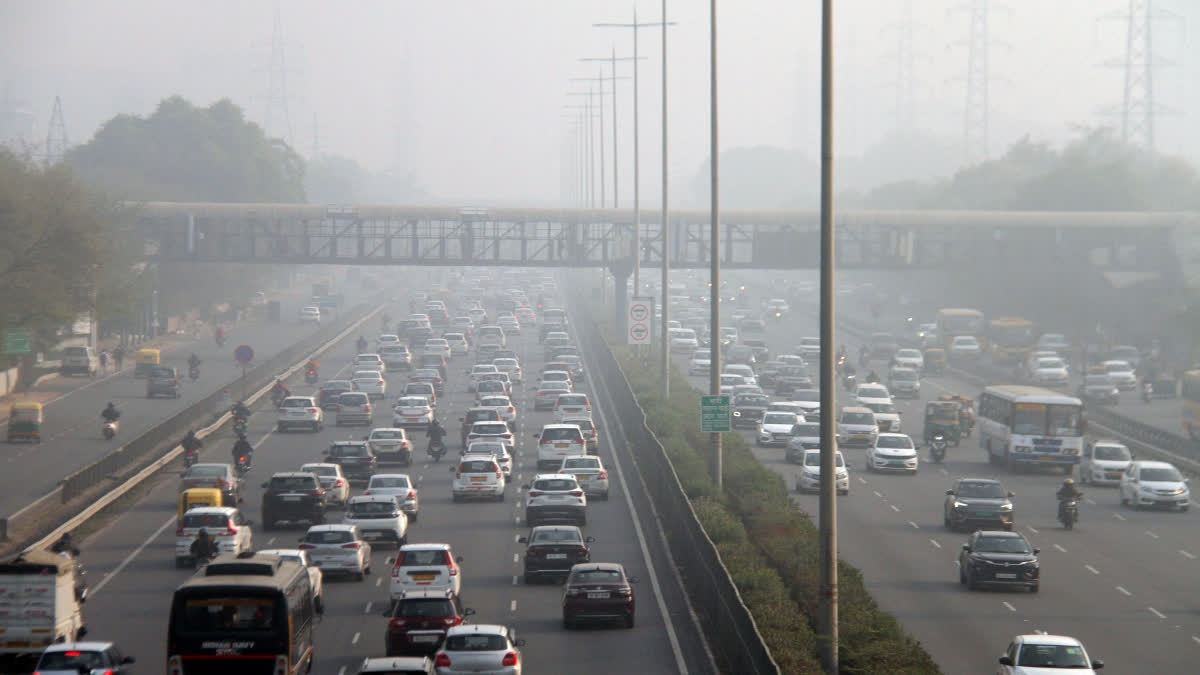Hyderabad: PM2.5 refers to particulate matter with a diameter of less than 2.5 micrometres. PM2.5 particles are roughly 28 times smaller than the diameter of a human hair (70 micrometres). These small particles can be inhaled deeply into the lungs and even enter the bloodstream. It can originate from various sources, including combustion processes, industrial emissions, and natural sources.
PM2.5 exposures are harmful during short periods of moderate to high exposure, and long periods of low to moderate exposure with differing health effects associated with each.
Well-documented health effects:
• Respiratory Issues: PM2.5 can cause or worsen respiratory problems such as asthma, bronchitis, emphysema (COPD), and other lung diseases.
• Cardiovascular Problems: It can lead to heart attacks, strokes, and other cardiovascular issues.
• Premature Death: Short and long-term exposures to high levels of PM2.5 are associated with increased mortality rates, especially among people with pre-existing health conditions and the elderly.
Other Health Effects: PM2.5 can also cause irritation of the eyes, nose, and throat, reduce lung function, and exacerbate existing health conditions. Additionally, it is known to cause premature birth and low birth weight, and new evidence is pointing to a link with neurogenerative diseases as well.
What Happens During Fuel Combustion in a Vehicle? How Are PM 2.5 Particles Created?
During fuel combustion in a vehicle, fuel mixes with air and is ignited, producing energy that powers the engine. This process also generates exhaust gases, including carbon dioxide, water vapour, and pollutants like nitrogen oxides, sulfur dioxide, and particulate matter (PM).
Formation of PM 2.5:
Incomplete Combustion: When fuel does not burn completely, it produces tiny particles of carbon and other substances that form PM2.5.
Chemical Reactions: Exhaust gases can react with the atmosphere, forming secondary PM2.5 particles.
Wear and Tear: Friction from brakes, tires, and road surfaces also generates PM2.5.
Why Are Diesel Vehicles Worse Than Petrol Vehicles?
Higher Emissions: Diesel engines produce more particulate matter and NOx compared to petrol engines.
Soot Formation: Diesel combustion is less complete, leading to higher soot and PM emissions.
Fuel Composition: Diesel fuel contains hydrocarbon and other compounds (such as sulfur) that contribute to PM2.5 formation.
Petrol Vehicles: Cleaner Combustion: Petrol engines typically burn fuel more completely, resulting in lower PM emissions.
Advanced Technologies: Modern petrol engines often have advanced emission control technologies like catalytic converters, which reduce harmful emissions.
However, petrol vehicles too have drawbacks due to other emissions, such as
1. Carbon Monoxide (CO):
Petrol engines emit higher levels of carbon monoxide, which is a poisonous gas that can cause health problems, particularly for those with heart conditions.
2. Volatile Organic Compounds (VOCs):
Petrol engines release VOCs, which contribute to the formation of ground-level ozone and smog. VOCs and ozone can also cause respiratory issues and other health problems.
3. Carbon Dioxide (CO2):
Although both petrol and diesel engines emit CO2, petrol engines generally emit higher levels per unit of energy produced. CO2 is a major greenhouse gas contributing to global warming and climate change. Therefore, both diesel and petrol vehicles have significant drawbacks in terms of air pollution, and transitioning to cleaner alternatives such as electric or hybrid vehicles can help reduce these impacts.
4. Other Sources of PM 2.5 Besides Vehicle Pollution
Industrial Emissions: Factories and power plants release PM2.5 through combustion processes and chemical reactions.
Agricultural Activities: Farming activities, such as ploughing, harvesting, and burning crop residues, can generate PM2.5.
Construction and Demolition: Dust from construction sites and demolitions contributes to PM2.5 levels.
Residential heating/cooking: Burning wood, coal, and other fuels for heating and cooking in homes can produce PM2.5.
Natural Sources: Wildfires, volcanic eruptions, and dust storms can also generate significant amounts of PM2.5.
Not all sources of PM2.5 are equally toxic, with byproducts of combustion processes generally considered to be more harmful to health than dust generated either through natural or human processes.
How to Control PM 2.5 Emission as a Stakeholder?
It should be a collective effort from all the stakeholders
As governments: Regulations: Implement and enforce strict emission standards for vehicles and industries.
Monitoring: Set up air quality monitoring systems to track PM2.5 levels and identify pollution sources.
Public Awareness: Educate the public about the health risks of PM2.5 and ways to reduce exposure.
As Industry:
Clean Technologies: Invest in cleaner production technologies and pollution control equipment.
Maintenance: Regularly maintain machinery and vehicles to ensure efficient and clean operation.
Alternative Fuels: Use cleaner fuels such as natural gas or renewable energy sources.
As an Individual:
Reduce Personal Vehicle Use: Use public transportation (buses, trains, metro) or other active modes of transport (bicycle, walking) as much as possible.
Energy Efficiency: Improve home energy efficiency and use cleaner heating options.
Support Policies: Advocate for and support policies aimed at reducing air pollution.
As community Initiatives:
Clean-Up Campaigns: Conduct community clean-up campaigns to reduce dust and other particulate matter.
Waste segregation and composting: Segregate organic waste from non-organic waste, enabling effective composting. Also, composting organic waste reduces methane emissions from landfills, decreases the need for incineration, and minimises air pollution, contributing to cleaner air and a healthier environment.
Through education:
Workshops and Seminars: Organise workshops and seminars to educate the public and stakeholders about air pollution and its control.
Through research and monitoring:
Citizen Science: Encourage community participation in air quality monitoring and data collection.
Research Projects: Support and conduct research on air pollution sources, impacts, and mitigation strategies. By taking these steps, we can collectively reduce PM2.5 emissions and improve air quality, benefiting both public health and the environment.
(The author is PhD from the Indian Institute of Technology Kharagpur. Currently, the author is working as a Senior research associate at Sustainable Futures Collaboratives (an independent research organisation) based in New Delhi. Her work focuses on assessing air quality, understanding the health impacts of air pollution and studying how environmental governance can be improved)



